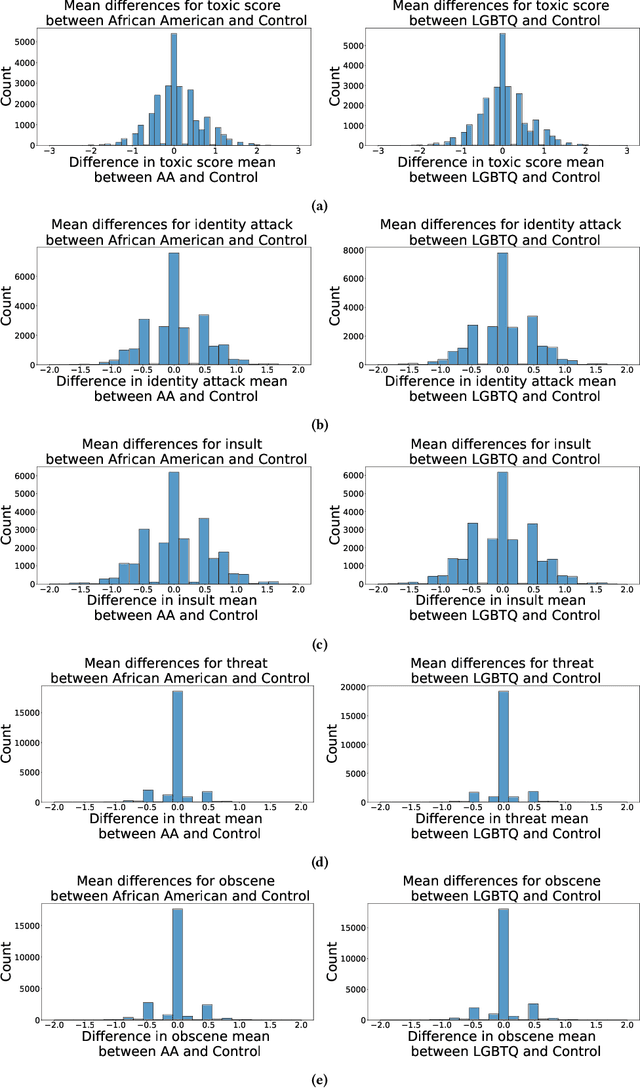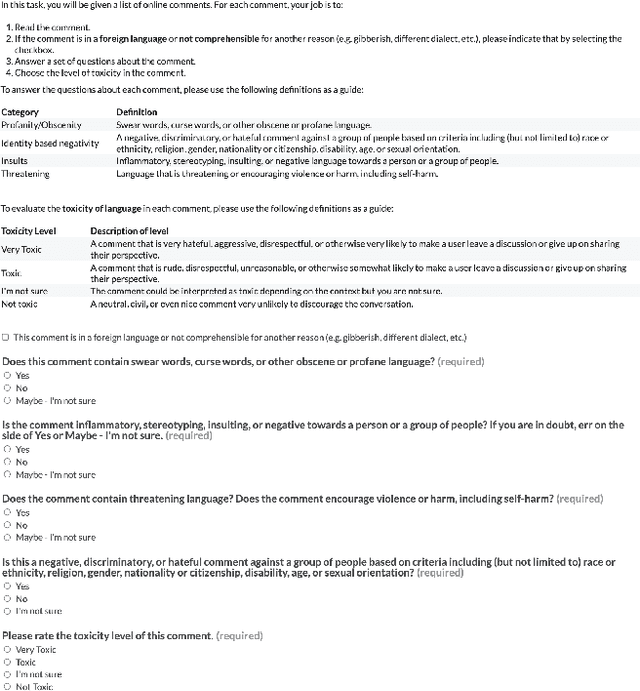Nitesh Goyal
Designing for Human-Agent Alignment: Understanding what humans want from their agents
Apr 04, 2024Abstract:Our ability to build autonomous agents that leverage Generative AI continues to increase by the day. As builders and users of such agents it is unclear what parameters we need to align on before the agents start performing tasks on our behalf. To discover these parameters, we ran a qualitative empirical research study about designing agents that can negotiate during a fictional yet relatable task of selling a camera online. We found that for an agent to perform the task successfully, humans/users and agents need to align over 6 dimensions: 1) Knowledge Schema Alignment 2) Autonomy and Agency Alignment 3) Operational Alignment and Training 4) Reputational Heuristics Alignment 5) Ethics Alignment and 6) Human Engagement Alignment. These empirical findings expand previous work related to process and specification alignment and the need for values and safety in Human-AI interactions. Subsequently we discuss three design directions for designers who are imagining a world filled with Human-Agent collaborations.
ConstitutionMaker: Interactively Critiquing Large Language Models by Converting Feedback into Principles
Oct 24, 2023Abstract:Large language model (LLM) prompting is a promising new approach for users to create and customize their own chatbots. However, current methods for steering a chatbot's outputs, such as prompt engineering and fine-tuning, do not support users in converting their natural feedback on the model's outputs to changes in the prompt or model. In this work, we explore how to enable users to interactively refine model outputs through their feedback, by helping them convert their feedback into a set of principles (i.e. a constitution) that dictate the model's behavior. From a formative study, we (1) found that users needed support converting their feedback into principles for the chatbot and (2) classified the different principle types desired by users. Inspired by these findings, we developed ConstitutionMaker, an interactive tool for converting user feedback into principles, to steer LLM-based chatbots. With ConstitutionMaker, users can provide either positive or negative feedback in natural language, select auto-generated feedback, or rewrite the chatbot's response; each mode of feedback automatically generates a principle that is inserted into the chatbot's prompt. In a user study with 14 participants, we compare ConstitutionMaker to an ablated version, where users write their own principles. With ConstitutionMaker, participants felt that their principles could better guide the chatbot, that they could more easily convert their feedback into principles, and that they could write principles more efficiently, with less mental demand. ConstitutionMaker helped users identify ways to improve the chatbot, formulate their intuitive responses to the model into feedback, and convert this feedback into specific and clear principles. Together, these findings inform future tools that support the interactive critiquing of LLM outputs.
`It is currently hodgepodge'': Examining AI/ML Practitioners' Challenges during Co-production of Responsible AI Values
Jul 14, 2023


Abstract:Recently, the AI/ML research community has indicated an urgent need to establish Responsible AI (RAI) values and practices as part of the AI/ML lifecycle. Several organizations and communities are responding to this call by sharing RAI guidelines. However, there are gaps in awareness, deliberation, and execution of such practices for multi-disciplinary ML practitioners. This work contributes to the discussion by unpacking co-production challenges faced by practitioners as they align their RAI values. We interviewed 23 individuals, across 10 organizations, tasked to ship AI/ML based products while upholding RAI norms and found that both top-down and bottom-up institutional structures create burden for different roles preventing them from upholding RAI values, a challenge that is further exacerbated when executing conflicted values. We share multiple value levers used as strategies by the practitioners to resolve their challenges. We end our paper with recommendations for inclusive and equitable RAI value-practices, creating supportive organizational structures and opportunities to further aid practitioners.
Is Your Toxicity My Toxicity? Exploring the Impact of Rater Identity on Toxicity Annotation
May 01, 2022



Abstract:Machine learning models are commonly used to detect toxicity in online conversations. These models are trained on datasets annotated by human raters. We explore how raters' self-described identities impact how they annotate toxicity in online comments. We first define the concept of specialized rater pools: rater pools formed based on raters' self-described identities, rather than at random. We formed three such rater pools for this study--specialized rater pools of raters from the U.S. who identify as African American, LGBTQ, and those who identify as neither. Each of these rater pools annotated the same set of comments, which contains many references to these identity groups. We found that rater identity is a statistically significant factor in how raters will annotate toxicity for identity-related annotations. Using preliminary content analysis, we examined the comments with the most disagreement between rater pools and found nuanced differences in the toxicity annotations. Next, we trained models on the annotations from each of the different rater pools, and compared the scores of these models on comments from several test sets. Finally, we discuss how using raters that self-identify with the subjects of comments can create more inclusive machine learning models, and provide more nuanced ratings than those by random raters.
 Add to Chrome
Add to Chrome Add to Firefox
Add to Firefox Add to Edge
Add to Edge